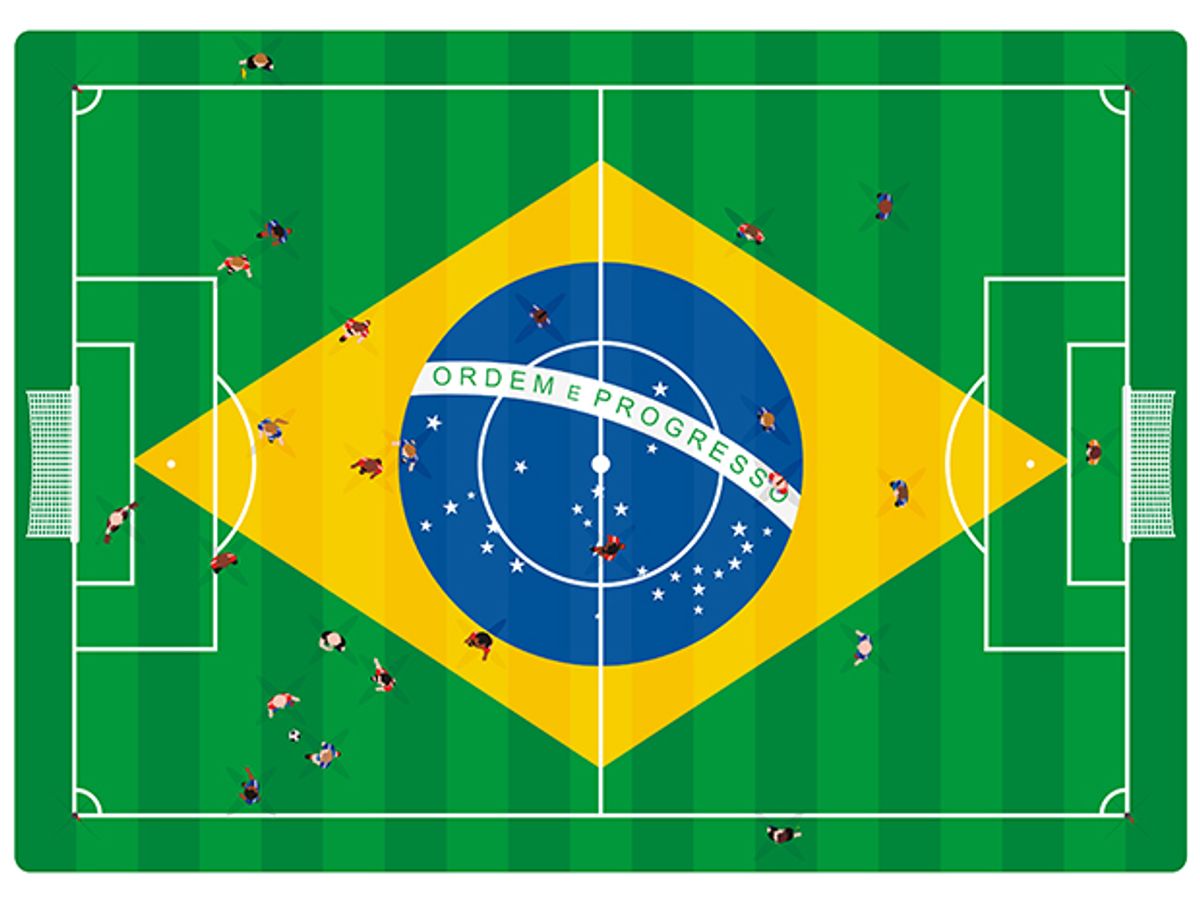Every four years, 32 countries from around the world send their fiercest, most battle-ready soccer players to compete in the sport's most celebrated international event: the World Cup. This year, the world has sent its finest innovations as well. The shoddy arenas in Brazil may themselves be a source of shame (during the first period of yesterday's opening match between Brazil and Croatia, about half the lights in the São Paulo stadium flickered and fizzled) but the fields and stands are brimming with technology.
Some of it is on full display. The opening kick, which is not traditionally known for being a high tech moment, took on great significance yesterday afternoon when Juliano Pinto—a Brazilian whose athletic career ended after he was paralyzed from the waist down in a 2006 car crash—stood up from his wheelchair and knocked the ball forward while wearing a robotic exoskeleton. The contraption took its commands from a set of electrodes pasted to Pinto's scalp which detected and deciphered faint electrical signals from his brain. The demonstration showcases the pioneering work of Miguel Nicolelis, a Brazilian neuroscientist and brain-computer interface researcher.
The other technologies being unveiled at the World Cup are certainly more subtle, but they actually have the potential to influence the outcome of games. During the 11th minute of yesterday's inaugural game, fans in São Paulo cringed and winced as they watched the ball deflect off the left toe of Brazilian defender Marcelo Vieira and land in the back of his own team's net, marking the first time in World Cup history that Brazil has made a goal against itself. Even before the spectators could absorb what was happening, a new automated detection system, called GoalControl, was alerting the referees on the field that a successful goal had been made. Officials in the 2014 games are wearing smart watches that vibrate whenever a ball fully crosses the goal line. The system, which uses 14 high-speed cameras (seven pointed at each goal) to capture the ball's movement in 3-D, was shown to be effective in a trial at the 2013 Confederations Cup. GoalControl successfully detected all 68 goals made at that tournament.
And then there is all the technology that fans bring with them to the stadiums. During the 2006 World Cup, the texting, posting, and tweeting of feverish fans generated 30 gigabytes of data traffic. And that was before Instagram existed. This year, analysts are expecting a cumulative total of 12.6 terabytes.
The IEEE Standards Association has broken down all of these World Cup technologies in this comprehensive infographic:



